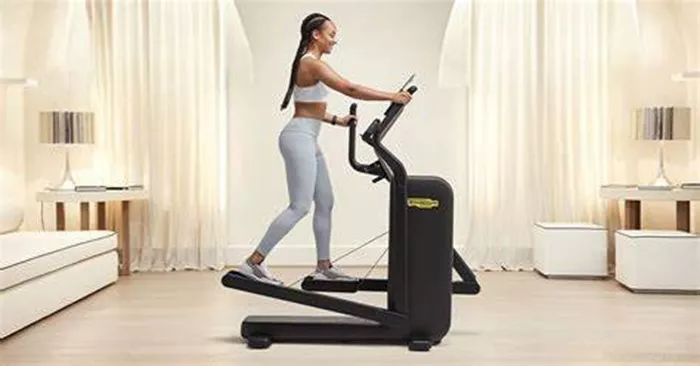Losing weight is a common fitness goal, and finding the right exercise equipment can make a significant difference in achieving that goal. Among the various options available, the cross trainer, also known as the elliptical trainer, stands out for its effectiveness and versatility. This article delves into the benefits of the cross trainer for weight loss, how it compares to other exercise equipment, and offers practical tips for maximizing its use.
The Cross Trainer
The cross trainer, or elliptical trainer, is a stationary exercise machine that simulates walking, running, or stair climbing without causing excessive pressure on the joints. This makes it an ideal choice for people with joint issues or those who are overweight. The cross trainer provides a full-body workout by engaging both the upper and lower body, which can lead to increased calorie burn and more efficient weight loss.
Benefits of Using a Cross Trainer
1. Low-Impact Exercise
One of the primary advantages of the cross trainer is its low-impact nature. Unlike running on a treadmill or pavement, the elliptical motion reduces the strain on your joints. This is particularly beneficial for individuals who have arthritis or are recovering from injuries. The low-impact exercise ensures that you can work out for longer periods without experiencing joint pain or discomfort.
2. Full-Body Workout
The cross trainer is designed to engage multiple muscle groups simultaneously. By using the handles, you can work your upper body, including the arms, shoulders, and chest, while the pedals target the lower body muscles such as the quadriceps, hamstrings, and glutes. This comprehensive workout helps in building muscle mass, which in turn boosts your metabolism and aids in burning more calories even at rest.
3. Cardiovascular Benefits
Regular use of a cross trainer can significantly improve your cardiovascular health. The continuous, rhythmic motion increases your heart rate, which strengthens the heart muscle and improves circulation. Enhanced cardiovascular fitness not only helps in weight loss but also reduces the risk of heart disease, hypertension, and other related conditions.
4. Customizable Intensity
Most cross trainers come with adjustable resistance levels and pre-set workout programs. This allows you to tailor your workout to your fitness level and goals. Whether you’re a beginner or an advanced athlete, you can increase the resistance to make your workout more challenging and burn more calories. Interval training, where you alternate between high and low-intensity levels, can also be easily incorporated into your routine for optimal fat loss.
Comparing the Cross Trainer to Other Exercise Equipment
1. Treadmill
The treadmill is one of the most popular pieces of cardio equipment in gyms. While it offers an excellent way to burn calories, it can be hard on the joints, especially for those with knee or hip problems. In contrast, the cross trainer provides a low-impact alternative that can still deliver a high-calorie burn. Additionally, the cross trainer engages the upper body, which the treadmill does not, offering a more comprehensive workout.
2. Stationary Bike
Stationary bikes are another common choice for cardio workouts. They are gentle on the joints and can be effective for burning calories, particularly when used for high-intensity interval training (HIIT). However, they primarily target the lower body, whereas the cross trainer offers a full-body workout. For individuals looking to engage more muscle groups and achieve balanced muscle development, the cross trainer is the superior choice.
3. Rowing Machine
Rowing machines provide a full-body workout and are excellent for building strength and cardiovascular fitness. However, they can be challenging for beginners to master and may not be suitable for those with lower back issues. The cross trainer, on the other hand, is user-friendly and can be easily adjusted to suit different fitness levels and physical conditions.
Maximizing Weight Loss with the Cross Trainer
1. Setting Realistic Goals
When embarking on a weight loss journey with the cross trainer, it’s important to set realistic and achievable goals. Start by determining your target weight and the time frame in which you aim to reach it. Break down your goal into smaller milestones to keep yourself motivated and track your progress.
2. Incorporating Interval Training
Interval training is a highly effective method for burning fat and improving cardiovascular fitness. By alternating between high-intensity bursts and lower-intensity recovery periods, you can maximize your calorie burn in a shorter amount of time. For example, you can pedal at a high resistance for one minute, followed by two minutes at a lower resistance, and repeat this cycle for 20-30 minutes.
See Also: How to Get Your Cardio Up in 2 Weeks: A Comprehensive Guide
3. Varying Your Workouts
To prevent boredom and plateaus, it’s essential to vary your workouts on the cross trainer. Experiment with different resistance levels, inclines, and pre-set programs. Incorporate backward pedaling to target different muscle groups and challenge your body in new ways. Mixing up your routine keeps your workouts interesting and ensures continuous progress.
4. Monitoring Your Intensity
Using a heart rate monitor can help you track the intensity of your workouts and ensure you’re exercising within your target heart rate zone. This zone is typically 50-85% of your maximum heart rate and is where you’ll burn the most calories and fat. Staying within this range will help you get the most out of your cross trainer sessions.
5. Combining Cardio and Strength Training
While the cross trainer provides an excellent cardio workout, combining it with strength training can further enhance your weight loss efforts. Strength training builds lean muscle mass, which increases your resting metabolic rate and helps you burn more calories throughout the day. Aim to include at least two strength training sessions per week, focusing on all major muscle groups.
Nutrition and Hydration
1. Balanced Diet
Exercise alone is not enough for effective weight loss; nutrition plays a crucial role as well. Ensure you’re consuming a balanced diet rich in whole foods, including lean proteins, healthy fats, and complex carbohydrates. Avoid processed foods, sugary beverages, and excessive amounts of refined carbs. Eating smaller, frequent meals can help regulate your blood sugar levels and prevent overeating.
2. Hydration
Staying hydrated is essential for optimal performance on the cross trainer and overall health. Dehydration can lead to fatigue, decreased endurance, and hinder your ability to burn calories efficiently. Aim to drink at least 8-10 glasses of water per day, and more if you’re engaging in intense workouts. Consider hydrating with electrolyte-rich beverages if you’re sweating heavily.
Tracking Progress and Staying Motivated
1. Keeping a Workout Journal
Maintaining a workout journal can help you track your progress, identify patterns, and stay motivated. Record details such as the duration, intensity, and type of workout, as well as any changes in your weight or measurements. Reviewing your journal regularly can provide valuable insights and reinforce your commitment to your weight loss goals.
2. Setting Non-Scale Victories
While the scale is a useful tool for tracking weight loss, it’s important to celebrate non-scale victories as well. These can include improvements in your fitness level, increased energy, better sleep, or fitting into a smaller clothing size. Recognizing these achievements can boost your confidence and keep you motivated on your journey.
3. Seeking Support
Having a support system can make a significant difference in your weight loss efforts. Whether it’s a workout buddy, a fitness class, or an online community, connecting with others who share your goals can provide encouragement, accountability, and motivation. Don’t hesitate to seek professional guidance from a personal trainer or nutritionist if needed.
Conclusion
The cross trainer is an excellent tool for losing weight due to its low-impact nature, full-body workout capability, and cardiovascular benefits. By incorporating interval training, varying your workouts, and combining cardio with strength training, you can maximize your results. Additionally, maintaining a balanced diet, staying hydrated, and tracking your progress will help you stay on track and achieve your weight loss goals. With dedication and consistency, the cross trainer can be a valuable ally in your journey to a healthier, fitter you.
[inline_related_posts title=”You Might Be Interested In” title_align=”left” style=”list” number=”6″ align=”none” ids=”10961,10897,10882″ by=”categories” orderby=”rand” order=”DESC” hide_thumb=”no” thumb_right=”no” views=”no” date=”yes” grid_columns=”2″ post_type=”” tax=””]



































